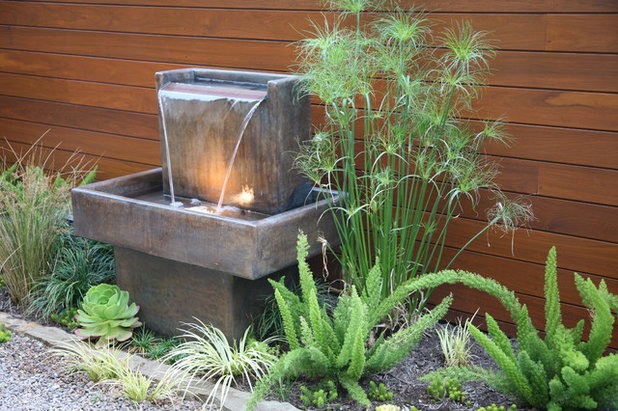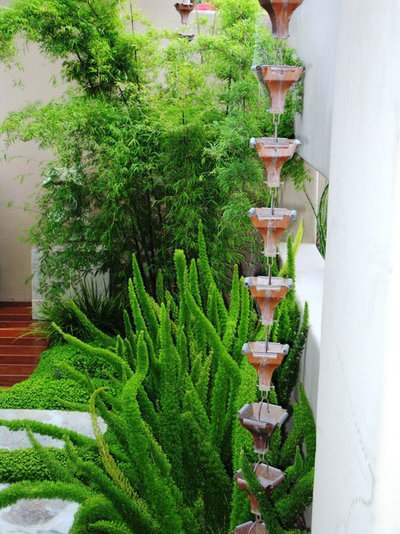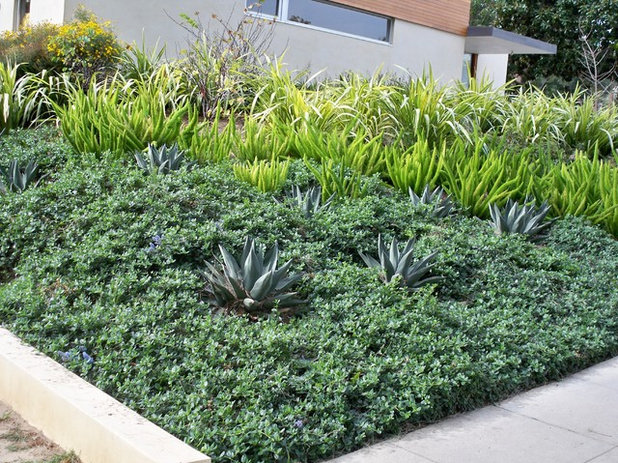For a soft companion to succulents, an alternative to ornamental grasses or a way to effectively dress up a bare entryway or porch, consider foxtail fern. While many asparagus ferns are popular planting accessories, foxtail fern is especially eye catching and one of my personal favorites. Its vivid coloring and distinct spreading stems awaken the garden, contrasting and complementing surrounding foliage.

EPT DESIGN
Botanical name: Asparagus densiflorus ‘Myers’ (sometimes sold as
A. meyeri or
A. myersii)
Common names: Foxtail fern, Myer's asparagus
USDA zones: 9 to 11; hardy to 20 to 25 degrees Fahrenheit (find your zone)
Water requirement: Medium
Light requirement: Sun to partial shade
Mature size: 3- to 4-foot clump
Benefits and tolerances: Tolerates coastal conditions and deer
Seasonal interest: Evergreen
When to plant: Year-round
Caution: Foxtail fern is toxic to pets if ingested.

debora carl landscape design

debora carl landscape design
Distinguishing traits. You’ll notice that this plant doesn’t look like a fern, and you’re right — it’s not. Asparagus fern is a member of the asparagus family, a relative of edible asparagus.
Foxtail fern's soft, fluffy foliage maintains an upright appearance, forming a 3- to 4-foot evergreen clump. Arms resembling foxtails or rabbit ears radiate from the center, covered in small, chartreuse, needle-like leaves.
Insignificant white flowers appear in spring, followed by red berries in fall. Beware of small thorns.

Studio Schicketanz
How to use it. You can showcase the unusual form and vivid coloring of foxtail fern in the ground or in pots. If your climate leans toward the colder side, containers make it easy to move your plant to a protected porch or patio when the weather turns. Foxtail fern also makes for a great houseplant.
In the ground, mass foxtail fern for a dazzling effect. Its soft texture, distinct form and chartreuse coloring pair well with architectural succulents or other waxy foliage plants.

{environmental concept}

Tara Bussema - Neat Organization and Design
Planting notes. Foxtail fern is hardy to about 20 degrees Fahrenheit; it's easily grown as a houseplant as well.
Outside, the plant grows well in full sun, with light afternoon shade in hotter climates. Native to the coast, foxtail fern grows well in rocky, sea-coast conditions and prefers moderately moist soil, rich in compost.
In temperate climates you can plant foxtail fern pretty much year-round. Mulch and water it well after planting to establish strong roots.
Foxtail fern grows quickly and can be divided every few years in spring. Remove spent foliage before new growth emerges each year. Too much or too little water — even too much sunlight — can cause yellowing leaves or leaf drop. If you notice this, adjust your care accordingly.





